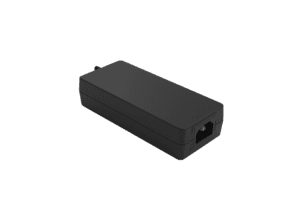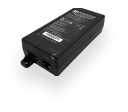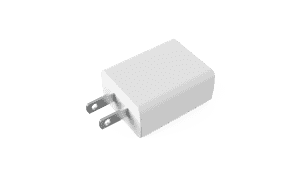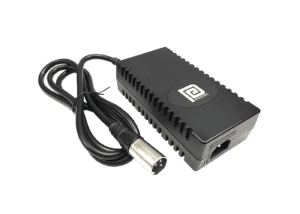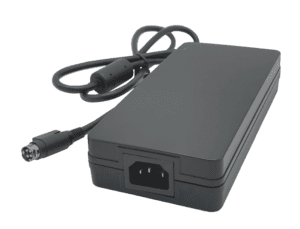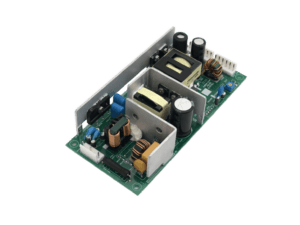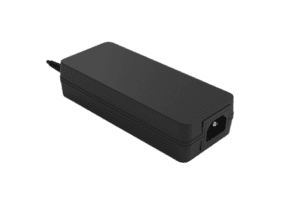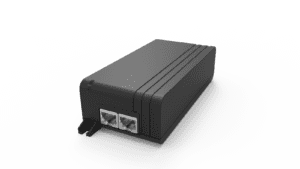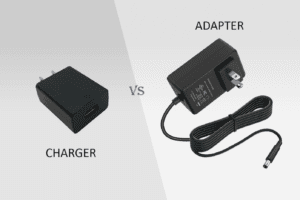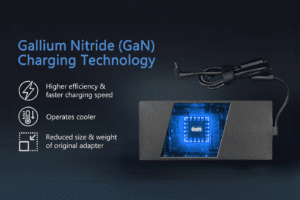BLOG
What Is the Best Universal Charging Station for Multi-Environment Robots?
Table of contents
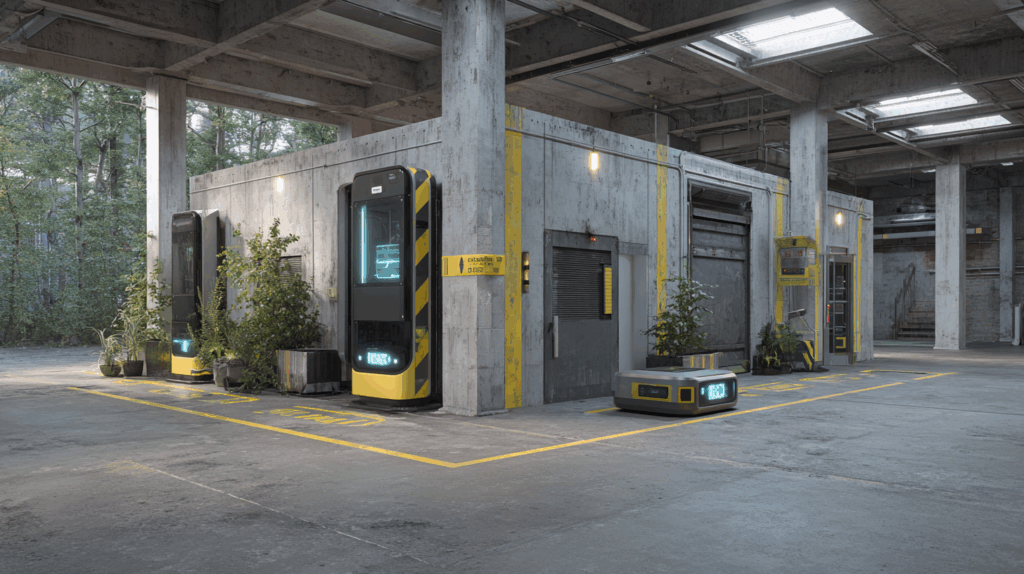
What challenges do multi-environment robots face when charging?
Robots designed for multiple environments—whether indoors, outdoors, or hybrid—must overcome very different charging challenges. A robot working in a clean warehouse setting doesn’t face the same conditions as one exposed to dust, water, or temperature swings. The charging station must be rugged, reliable, and able to deliver the right voltage and current under varying conditions. This creates demand for flexible, universal charging stations that can adapt to diverse operating environments without sacrificing efficiency.
Another challenge lies in ensuring compatibility. Industrial robots, delivery robots, and cleaning robots may all require different power profiles. A universal charging station must manage those profiles automatically while maintaining safety and compliance standards. Fast charging, reduced downtime, and monitoring features are also critical to keep robots operational across shifts. Manufacturers who can provide robust solutions with intelligent power management are the ones setting new benchmarks in the robotics industry.
Top Benefits
-
Enhanced operational uptime by reducing charging-related downtime
-
Greater cost-efficiency by using one charging infrastructure for multiple robot types
-
Improved safety and reliability across rugged and sensitive environments
Best Practices
-
Select a universal charger rated for outdoor/indoor use
-
Verify compatibility with multiple robot battery chemistries
-
Use monitoring tools for predictive maintenance
-
Ensure compliance with IEC/UL safety standards
Multi-environment robots demand versatile charging solutions that balance rugged durability with intelligent adaptability. By selecting a universal station that meets safety standards and supports multiple chemistries, operators can extend equipment life while cutting costs. These stations ultimately help robotics teams maximize uptime, reduce operational complexity, and achieve long-term efficiency across varied environments.
(Suggested Links: Battery Charger Solutions | Medical Power Supplies)
How does a universal charging station improve fleet efficiency?
Universal charging stations are not only about compatibility—they streamline fleet operations. Instead of requiring different charging docks for each robot model, one station can power the entire fleet. This reduces floor space requirements, simplifies cabling, and enables centralized energy monitoring. Fleet managers gain more control over scheduling, reducing bottlenecks and idle time while ensuring each robot is ready for its next deployment.
In robotics-heavy industries like logistics, healthcare, and manufacturing, efficiency often hinges on keeping fleets active with minimal downtime. By automating charging through a universal platform, operators avoid delays caused by mismatched hardware or lengthy manual plug-in procedures. Add in software-driven scheduling, and charging can be balanced to reduce strain on the power grid and optimize energy costs.
Top Benefits
-
Simplified infrastructure management across diverse fleets
-
Reduced operational downtime with streamlined scheduling
-
Lower total cost of ownership for power systems
Best Practices
-
Centralize charging schedules through fleet management software
-
Choose chargers with intelligent load-balancing features
-
Track energy usage for cost optimization
-
Integrate predictive alerts for battery maintenance
Universal charging stations make robotic fleets far more efficient by reducing complexity and automating repetitive tasks. Instead of juggling multiple dock types, managers can rely on a single platform that adapts to diverse operational needs. This not only increases robot availability but also helps organizations reduce expenses, conserve energy, and improve overall productivity across different environments and work cycles.
(Suggested Links: Open-Frame Power Supplies | PoE Injectors)
What features define the best universal charging station?
Not all charging stations are created equal, especially when dealing with multi-environment robotics. The best solutions combine hardware durability with intelligent software management. Features like wide input voltage ranges, multiple output profiles, and adaptive charging protocols ensure compatibility across robots with different battery chemistries and capacities. Rugged designs with IP-rated enclosures allow the station to function in harsh or outdoor conditions, while compact footprints make them suitable for space-limited facilities.
Equally important are built-in safety and compliance features. Over-voltage protection, thermal management, and compliance with IEC and UL standards help protect both the robots and the operators. In today’s robotics-driven industries, sustainability also matters. Universal charging stations with energy-efficient components and smart load balancing reduce environmental impact while saving operational costs.
Top Benefits
-
Cross-platform compatibility with diverse robot fleets
-
Energy efficiency and sustainability improvements
-
Enhanced safety through compliance and monitoring
Best Practices
-
Look for IP-rated protection against dust and water
-
Ensure UL/IEC certifications for safety
-
Prioritize modular designs for scalability
-
Integrate smart monitoring dashboards
The best universal charging stations are those that balance durability, intelligence, and compliance in one package. For operators, this means confidence that their entire robot fleet will remain powered, safe, and efficient under any condition. By prioritizing stations that combine rugged design with smart features, companies set themselves up for sustainable growth in robotics-driven operations.
(Suggested Links: Battery Chargers | Internal Power Supply Guide)
CLIENT'S QUOTE
"Phihong’s PoE solutions have made a huge difference for us! Our network runs more efficiently, and we’ve seen real cost savings. We couldn’t be happier!"
Universal charging stations reduce infrastructure complexity
Managing multiple robot fleets usually means juggling a variety of docks, chargers, and cable systems. Over time, this adds clutter, raises maintenance costs, and increases the risk of downtime. A universal charging station solves these problems by consolidating infrastructure into a single, flexible platform. Instead of operating parallel systems for different robot types, businesses can rely on one standardized hub that reduces equipment sprawl and streamlines daily operations.
Beyond physical simplicity, centralization also reduces technical overhead. Maintenance teams only need to manage one set of components and firmware updates. Training is easier because staff learn one system rather than several. Combined, these advantages translate into long-term savings, fewer breakdowns, and better use of limited workspace. For growing industries like logistics and manufacturing, where efficiency and scalability are critical, reducing infrastructure complexity directly supports growth and competitiveness.
Top Benefits
-
Simplified training and support requirements across the organization
-
Fewer spare parts and reduced inventory costs
-
Improved reliability with a single, standardized system
Best Practices
-
Standardize charging equipment across sites early in fleet planning
-
Prioritize chargers with modular components for easier upgrades
-
Maintain a documented maintenance schedule across all stations
Universal charging stations help companies remove unnecessary complexity from operations, allowing them to focus on scaling robot fleets without worrying about mismatched or outdated equipment. By consolidating infrastructure, organizations cut costs, reduce risks, and achieve smoother daily workflows.
(Suggested Links: Battery Charger Solutions | Innovations in Medical Power Supply Design)
Energy-efficient charging lowers operational costs
Energy costs are a growing concern for industries deploying large robot fleets. Universal charging stations designed with energy efficiency in mind can significantly reduce electricity usage and improve sustainability. Features such as high conversion efficiency, smart load balancing, and adaptive charging protocols minimize wasted power. These optimizations not only help companies lower their utility bills but also align with corporate sustainability goals and environmental standards.
Energy-efficient chargers also reduce heat generation, improving both safety and longevity. Less energy wasted as heat means components last longer, lowering the frequency of maintenance and replacement. Over time, the savings compound, making energy-efficient universal stations a wise investment for businesses that want both operational and environmental benefits. In highly competitive sectors, the ability to lower costs while promoting sustainability is a valuable differentiator.
Top Benefits
-
Lower utility costs through high-efficiency power conversion
-
Extended lifespan of both chargers and robot batteries
-
Compliance with environmental and sustainability goals
Best Practices
-
Select chargers with >90% energy efficiency ratings
-
Use smart scheduling to balance energy loads during off-peak hours
-
Regularly monitor power usage with IoT-enabled dashboards
Energy-efficient universal charging stations empower businesses to achieve cost savings while promoting eco-friendly practices. By choosing high-efficiency systems with smart monitoring, organizations can improve their bottom line while also reducing their carbon footprint.
(Suggested Links: USB-C PD Adapters | Open-Frame Power Supplies)
Ruggedized chargers ensure reliability in harsh environments
Many robots are required to operate in environments that are anything but forgiving—outdoor delivery routes, dusty warehouses, or healthcare facilities with strict sanitation protocols. A universal charging station built with ruggedized features, such as IP-rated enclosures, wide operating temperature ranges, and robust connectors, ensures that charging can take place reliably under these conditions. Without these protections, robots risk frequent downtime, damaged batteries, and higher maintenance costs.
Rugged chargers also provide an added layer of safety for operators. Features like sealed connectors prevent dust or moisture ingress, while thermal sensors prevent overheating. This makes them ideal for industries such as agriculture, construction, or outdoor logistics, where unpredictable conditions are the norm. By investing in ruggedized universal charging stations, organizations can reduce equipment failures, maintain uptime, and extend the service life of their fleets.
Top Benefits
-
Reliable performance in extreme temperatures, dust, or moisture
-
Reduced downtime from environmental damage or wear
-
Greater safety for both operators and equipment
Best Practices
-
Choose chargers with IP65 or higher ratings for outdoor use
-
Ensure proper ventilation or cooling systems are in place
-
Regularly inspect connectors and seals for wear
Ruggedized universal charging stations make it possible for robots to perform consistently even in demanding environments. By ensuring durability and compliance with safety standards, businesses can protect their investment, maintain operational continuity, and deliver reliable performance no matter where their robots are deployed.
(Suggested Links: Medical Power Supplies | PoE Injectors
How Phihong supports universal charging solutions for robotics
Phihong has long been at the forefront of power innovation, offering a wide portfolio of products that align with the needs of multi-environment robotics. From ruggedized battery chargers to high-efficiency USB-C PD adapters, Phihong designs solutions that balance durability, flexibility, and compliance. Their universal chargers are engineered to work across diverse environments, whether it’s a climate-controlled warehouse or an outdoor logistics hub.
By prioritizing features like energy efficiency, wide input ranges, and intelligent charging protocols, Phihong ensures that businesses can manage robotic fleets with confidence. For manufacturers and operators, this means access to power solutions that meet IEC/UL standards, integrate seamlessly with modern systems, and support long-term scalability. Whether you’re powering delivery robots, medical assistants, or industrial automation fleets, Phihong provides the reliable infrastructure needed to maximize uptime and efficiency.
(Suggested Links: Battery Chargers | Contact Phihong

Contact Our Team Today!
Our dedicated sales team and international partners are prepared to support you with your latest projects and initiatives globally.
Explore More with Phihong USA
As we conclude our exploration of PoE technology, it’s evident how these innovations are streamlining power and data integration across various industries. Phihong USA stands at the forefront of this technological advancement, offering a diverse range of power solutions designed to meet the evolving needs of modern industries.
Phihong USA’s extensive product lineup includes:
- Power over Ethernet (PoE) Solutions: Delivering reliable power and data transmission over a single cable, ideal for simplifying network installations and reducing costs.
- AC/DC Adapters and Power Supplies: From compact adapters to industrial-grade power supplies, Phihong provides solutions that ensure efficiency and reliability in various applications.
- Battery Chargers: Customizable chargers for lithium-ion and lead-acid batteries, supporting a wide range of power requirements for mobility and industrial applications.
- Medical Power Supplies: Specialized power solutions designed to meet the stringent requirements of the healthcare industry, ensuring safety and reliability.
Phihong USA is committed to innovation and excellence, continually developing products that meet the highest standards of performance and reliability. Their global reach and dedication to customer support make them a trusted partner in powering the future.
Here are some useful links to explore Phihong USA’s offerings further and bring in new potential clients:
Visit Phihong USA to discover how their advanced power solutions can support your business needs. Whether you’re looking to upgrade your network, or find reliable power supplies, Phihong USA has you covered.
By choosing Phihong USA, you’re partnering with a leader in power technology, ensuring your operations run smoothly and efficiently with top-tier power solutions. Contact Us today!
FAQ
What makes a charging station “universal” for robotics?
A universal charging station is designed to support multiple types of robots, regardless of battery chemistry, voltage, or deployment environment. Unlike proprietary chargers that only work with one model or brand, a universal solution uses adaptable voltage ranges and protocols to handle diverse power requirements. For example, one dock might charge an industrial robot’s high-capacity battery and a lightweight delivery robot’s lithium-ion pack with equal efficiency.
This flexibility saves companies from investing in multiple charging infrastructures. It reduces clutter, lowers training requirements, and simplifies maintenance by consolidating everything into a single platform. Universality also means durability—stations are often built with IP-rated enclosures to withstand dust, water, or outdoor conditions. Smart features like load balancing, real-time monitoring, and predictive alerts make them even more efficient. For robotics-driven businesses, a universal charging station is the cornerstone of fleet scalability, operational uptime, and long-term cost savings.
How do universal charging stations impact robot uptime?
Uptime is one of the most critical factors in robotic operations, and charging delays can quickly derail productivity. Universal charging stations directly address this issue by minimizing downtime. Because they support multiple robot types, operators don’t need to worry about whether a specific dock is available. Robots can return to any available universal station, charge quickly, and be back in operation faster.
Advanced stations also include features like fast-charging modes, automated battery recognition, and software-controlled scheduling. These capabilities ensure that robots receive the right charge at the right time, reducing idle time and extending operational windows. For large fleets, this means smoother rotations and fewer bottlenecks. By reducing wait times and automating the charging process, universal solutions maximize uptime and give operators more control over performance and efficiency.
What safety features should operators look for in universal chargers?
Safety is non-negotiable in robotics, especially when dealing with high-capacity batteries across multiple environments. The best universal charging stations incorporate built-in safety protocols such as over-voltage protection, current limiting, short-circuit prevention, and thermal management. These features prevent accidents that could damage equipment or endanger operators.
Compliance with recognized standards like IEC, UL, and CE is another must-have. Certified chargers provide assurance that they’ve passed rigorous testing under a wide range of conditions. Operators should also prioritize rugged designs with sealed connectors to prevent dust or water ingress. In industries like healthcare or food logistics, where cleanliness is essential, features that support sanitization are equally important. By investing in chargers with these safety mechanisms, organizations not only protect their equipment but also create a safer environment for staff and end users.
How do energy-efficient charging stations lower long-term costs?
Energy efficiency translates directly into financial savings. High-efficiency charging stations waste less power as heat, which means lower electricity bills and longer component life. For businesses running fleets of dozens—or even hundreds—of robots, these savings can be significant over time. Energy-efficient chargers often achieve conversion rates of 90% or higher, ensuring that most of the energy drawn from the grid is delivered directly to the robot’s battery.
Efficiency also contributes to sustainability goals. By reducing wasted energy, businesses can cut their carbon footprint while meeting regulatory requirements or corporate responsibility standards. Many energy-efficient chargers now include load-balancing features that optimize charging cycles during off-peak hours, further reducing costs. In short, energy-efficient universal charging stations provide a double benefit: they keep operations running at lower costs while reinforcing a company’s commitment to sustainability and environmental stewardship.
Why should businesses choose Phihong for robotic charging solutions?
Phihong stands out because of its history in designing reliable, high-performance power solutions across industries. For robotics, Phihong’s universal chargers combine ruggedized hardware, energy efficiency, and smart management tools. Businesses benefit from products that are IEC/UL compliant, adaptable across environments, and engineered for both current and future robotics needs.
Beyond product design, Phihong provides ongoing support and consultation to help operators integrate charging systems into their broader infrastructure. Whether the application is indoor automation, outdoor logistics, or healthcare robotics, Phihong’s solutions are built to ensure uptime, reliability, and cost efficiency. Choosing Phihong means partnering with a manufacturer that not only delivers hardware but also supports long-term growth through innovation and scalability. For organizations scaling robotic fleets, Phihong provides the expertise and trusted solutions to ensure success.

